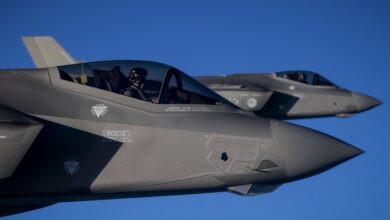Solar-Powered US Army Drone Crashes After Record 64-Day Flight
An unmanned solar-powered aircraft has crashed after flying for 64 days, more than doubling the record for a pilotless plane, the US Army and media sources said Tuesday.
The Zephyr-8 drone made by Europe’s Airbus “encountered events that led to its unexpected termination” over the Yuma Proving Ground desert test facility in Arizona on August 18, the Army Futures Command said in a statement.
The statement did not provide details, but the Simple Flying website, studying online flight tracking data, said the gangly high-tech aircraft was flying in S-shaped patterns over the southwest US at 45,000-50,000 feet when it suddenly descended at an accelerated rate.
The army did not explain what happened but said there were no injuries from the incident.
“Our team is working hard to gather and analyze important data following the unexpected termination of this flight,” Michael Monteleone, director of the US Army program overseeing the flight, said in a statement.
The solar-powered Zephyr, with a 25-meter (82-foot) wingspan and weighing just 75 kilograms (165 pounds), had more than doubled the previous flight record for an unmanned aircraft.
The flight fell just shy of the all-time record for any propeller-driven aircraft. In 1959, two pilots flew a Cessna 172 over the southwest US desert for 64 days, 22 hours, and 19 minutes, refueling twice a day from a pickup truck driving beneath them on the ground.
The Zephyr flew nearly the entire time in the stratosphere, testing its ability to collect and transmit data and be directed via satellite connections, according to the US Army and Airbus.
It has the potential to serve as a “High Altitude Platform Station,” which is a unit that can remain at high altitudes for extended periods providing broadband communications services to remote regions below.
“The valuable experience from this flight is part of the process of reaching our ultimate flight endurance goals,” Airbus said.












